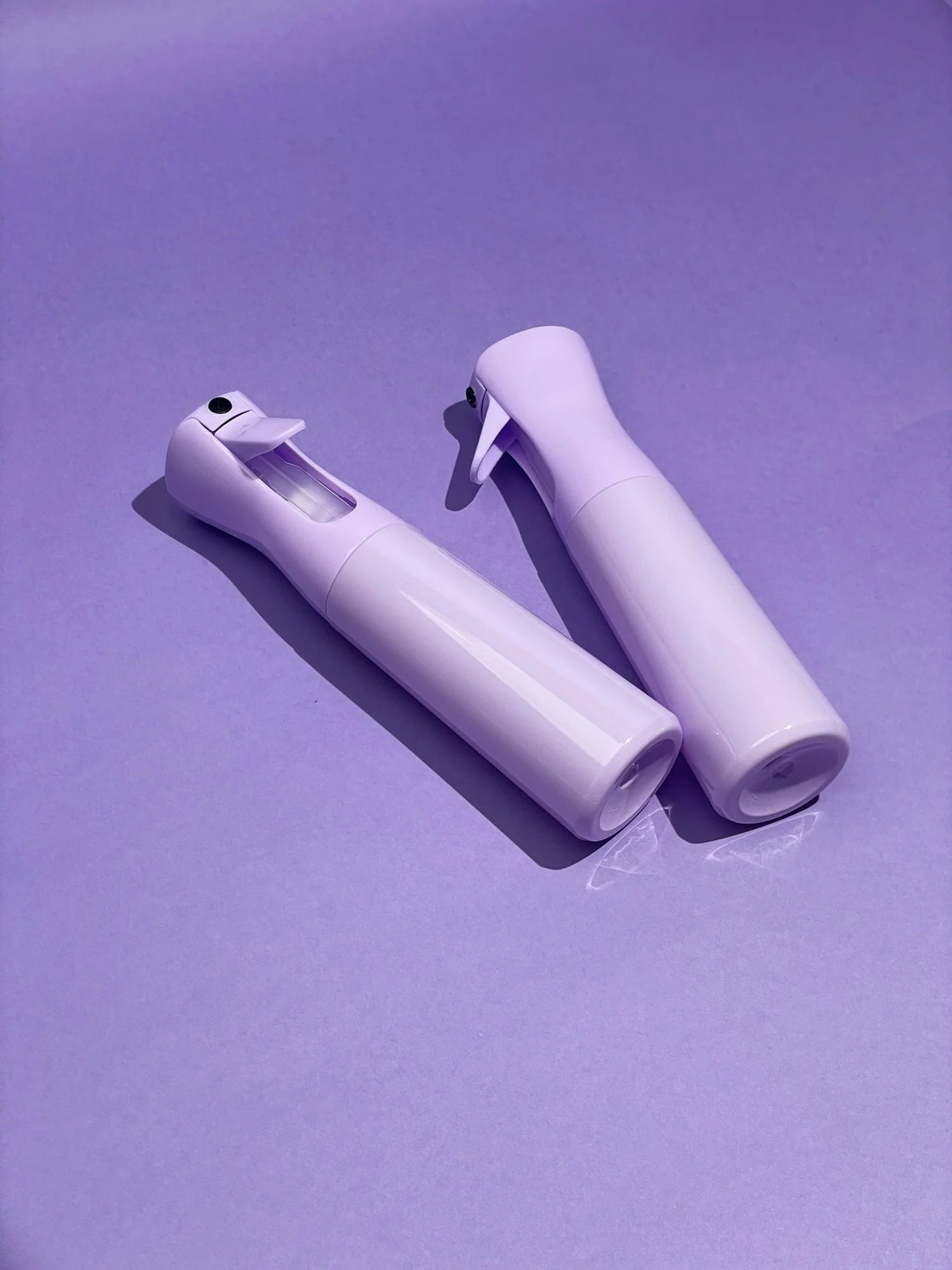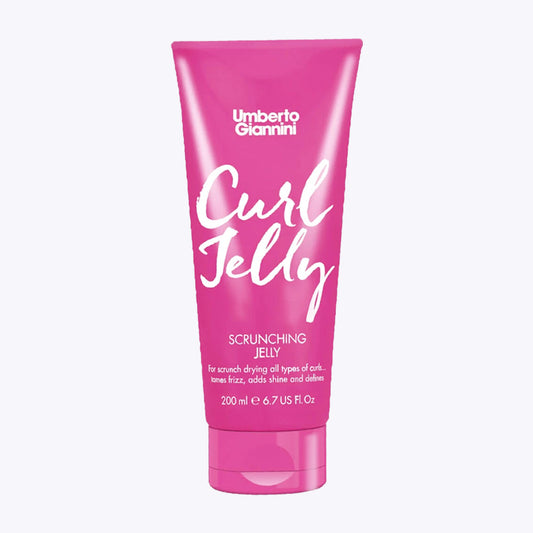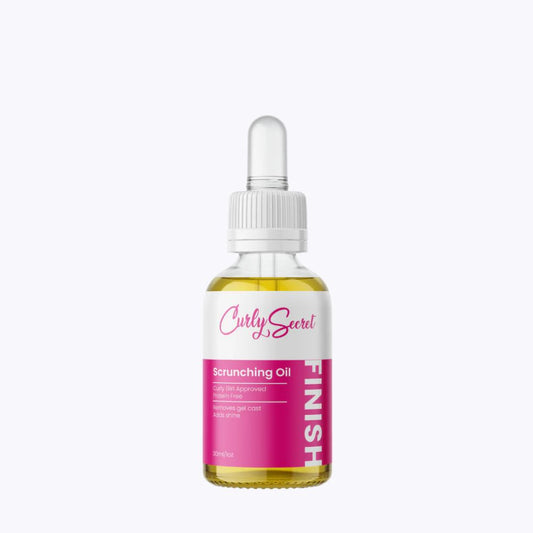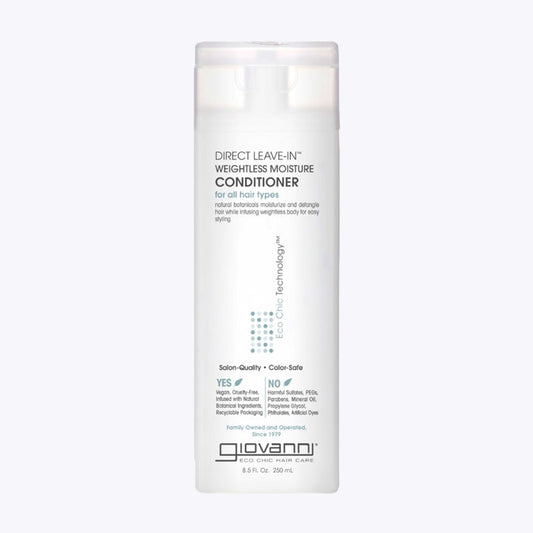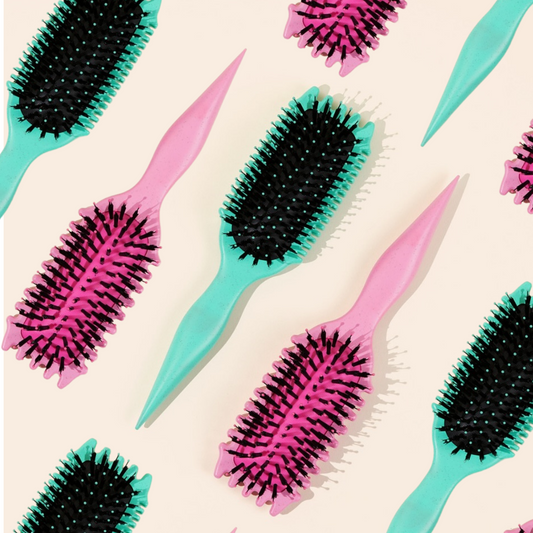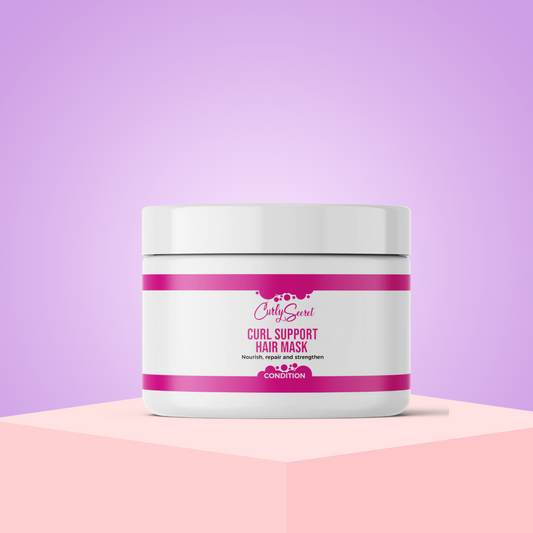Flash-drying and curly hair is a topic that we regularly see within the CG groups on Facebook. We'll tell you what you can do about it!
What is flash drying?
You usually notice flash drying, or 'wet frizz', immediately when you wash your hair. Have you rinsed out a mask or conditioner and are you squeezing the excess water from your hair? Then you immediately notice that certain parts and/or strands of your hair are frizzy.
Flash drying can also occur during your styling process, for example when applying your leave-in and gel.
This phenomenon can be very annoying, because if you experience this, chances are that your hair will also dry frizzy after your entire routine.
What happens to your hair during flash drying?
Basically, your hair dries extremely quickly or even immediately after you wash it. It may then seem as if your hair has not absorbed any water at all. This often does not happen to the entire hair, but to certain strands or strands.
The hair that has to do with flash drying is often characterized by the following:
- It may feel dry and stiff.
- It feels 'crunchy'.
- It can stick together.
- Tangles may form.
You can see it clearly; see the image below:

What causes flash drying?
Hair products that adhere to the hair, especially products with film formers, either by design (it is an active ingredient) or by subconscious choice (it is part of a plant extract or oil), can disrupt the interaction between the water and disturb the hair. Due to this disturbance, water may not be absorbed or not absorbed properly by the hair.
Who develops flash drying?
Anyone can experience flash drying. As a rule, low porosity hair would be more likely to be affected because this type of hair is less able to absorb moisture. Our hair can differ in porosity in different places. It could therefore be that you only notice flash drying in the underlayers of your hair.
Coarse hair, stronger curl types and women with gray hair may also be more sensitive to flash drying as these types of hair tend to be less porous. Please note, this does not always have to be the case!
Which ingredients play a role in this?
Film-forming polymers such as:
- Guar Hydroxypropyltrimonium Chloride
- Polyquaternium-10
- Polyquaternium-11
- Polyquaternium-4
- Polyquaternium-69
Product build-up can also cause flash drying. Some ingredients can build up on your hair. These polymers are generally positively charged and are attracted to the negatively charged hair. This forms a layer around your hair and 'fills in' damage. They help protect your hair, retain moisture and act as a conditioning agent for your hair. But unfortunately, excessive or regular use of these polymers can lead to build-up, which can then cause flash drying as your hair can no longer absorb and retain moisture.
Other ingredients that can cause flash drying:
- Glycerin: This is a humectant and in large amounts (5.0 - 10.0%), especially if listed as the second or third ingredient, can cause flash drying. Under humid hair conditions this can cause severe frizz.
- Other humectants such as Hyaluronic Acid, Propylene Glycol, Honey, Sorbitol, and Aloe Vera may have similar effects.
Other reasons for flash drying:
Hard water can also contribute to flash drying. If your water is hard, it contains an excessive amount of minerals that can cling to your hair the way conditioners do. This can be especially a problem if you have porous hair, where the minerals can bond even more strongly. Ultimately, this can lead to dryness, stiffness and brittle hair.
What can you do about it?
It's best to reevaluate your routine. Try to see if you have tried any new products recently. Start by removing and replacing one product from your routine. See how your hair reacts when you use the products separately. If you've made changes to your routine, such as a new shampoo or gel, and your hair feels dry and rough, consider switching back to your old gel or trying an alternative. Still use the shampoo and, if necessary, note in your notes how your hair reacts.
Other solutions:
- Consider using a protein-free leave-in or cream if you use a lot of products that contain protein.
- Add a clarifying shampoo to your routine to combat product build-up. This doesn't have to happen often; once every 1 or 2 months may be sufficient. Experiment to see what works best for you.
Can we help you with anything based on this blog? Feel free to let us know in the comments below.
